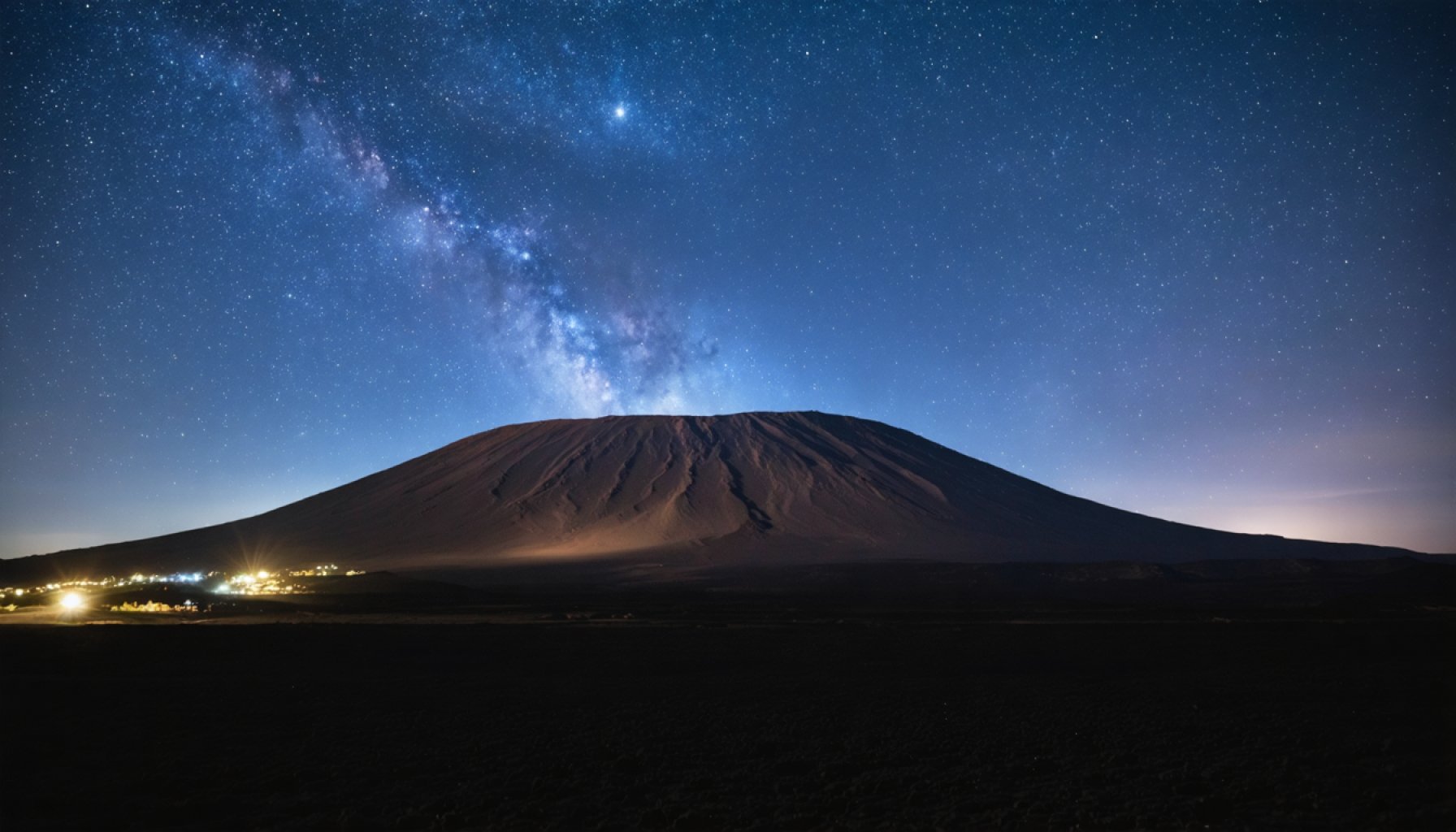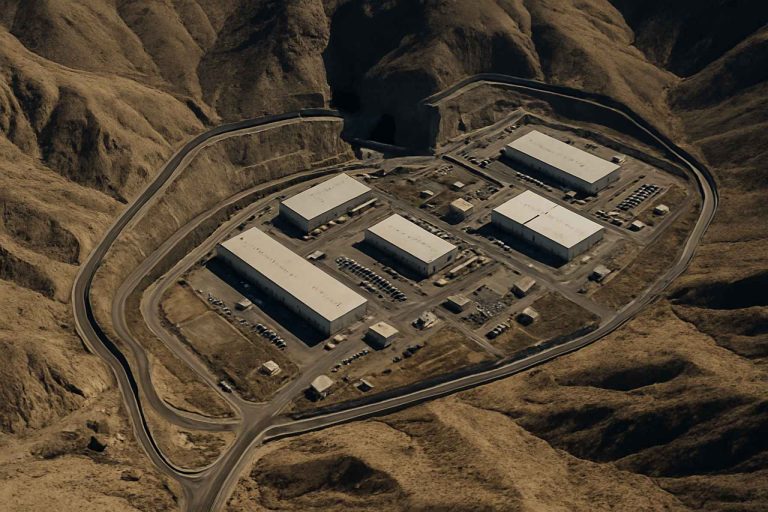
- Mauna Kea, a dormant volcano in Hawaii, serves as a prime site for astronomical exploration due to its high altitude and clear skies.
- At over 13,000 feet, its summit provides an exceptional view of the cosmos, free from light pollution and atmospheric disturbances.
- The location hosts several observatories, including the world-renowned Keck Observatory, facilitating groundbreaking astronomical research.
- Guided tours and visitor centers offer both amateur and professional stargazers the opportunity to observe celestial wonders.
- Mauna Kea encourages a deeper reflection on humanity’s place in the universe and inspires exploration and curiosity.
- This unique destination provides an enriching experience, connecting visitors with the timeless beauty of the night sky.
Rising majestically above the Hawaiian landscape, Mauna Kea stands as a gateway to the universe. This dormant volcano is not only renowned for its geological grandeur but also for its astronomical significance. At over 13,000 feet, Mauna Kea’s summit offers an unparalleled vantage point where the sky unfurls in a pristine, star-studded tapestry.
Under the dome of the cosmos, Mauna Kea’s remote location and remarkable altitude combine to create an astronomical haven unmatched by any other. The air here is crisp and thin, with an almost mystical clarity that strips away the interference of earthly light pollution and atmospheric disturbances. It’s a celestial theater where the Milky Way spills out in glittering abundance and planets wink into view with shimmering precision.
Perched amidst this ethereal landscape are numerous observatories, including the Keck Observatory, the largest optical and infrared telescope system in the world. These facilities stand as sentinels of knowledge, pushing the boundaries of our understanding of the universe. They draw astronomers from around the globe, each eager to peer through lenses that capture the earliest light of galaxies and the faint echoes of primordial stars.
For those who venture to Mauna Kea, an experience of cosmic proportions awaits. Guided tours shepherd visitors across volcanic terrain to witness the nightly spectacle, while visitor centers offer telescopes that invite everyone—from seasoned astronomers to curious travelers—to step into the role of a stargazer. Here, constellations become familiar friends, and planets reveal their secret colors.
Yet, beyond the technological marvels and celestial wonders, there is a deeper connection to the universe that one feels on Mauna Kea. It is an invitation to ponder our place in the vast expanse of the cosmos, a reminder of the delicate balance that sustains our planet, and an inspiration to explore the mysteries that lie beyond our world with curiosity and reverence.
Mauna Kea is more than just a destination; it is an experience that enriches the soul and broadens the mind. As you stand upon its ancient slopes and cast your gaze skyward, you become a part of a timeless conversation between Earth and the stars. Let this mountain-scape inspire you to seek out the wonders that lie within reach, illuminating the night with their ageless glow.
Unlocking the Secrets of the Universe: Explore Mauna Kea, Earth’s Extraterrestrial Outpost
Introduction
Mauna Kea is not only a towering giant on the Hawaiian landscape but also a critical hub for astronomical research, intertwining geological splendor with cosmic discovery. At an altitude exceeding 13,000 feet, this dormant volcano serves as a gateway to the universe, offering unrivaled celestial viewing opportunities.
More Than Meets the Eye: Additional Insights
Astronomical Significance
– The Ideal Observatory Location: Mauna Kea’s remote location and high altitude provide an ideal environment for astronomical observation with low humidity, minimal cloud cover, and reduced atmospheric interference.
– World-Class Observatories: Besides the renowned Keck Observatory, other notable facilities include the Subaru Telescope, the James Clerk Maxwell Telescope, and the Gemini North Telescope. Each contributes uniquely to the study of star formations, black holes, and distant galaxies.
Cultural and Environmental Importance
– Sacred Grounds: The summit is considered sacred by Native Hawaiians, who view it as the realm of gods and an ancestral gathering place. Efforts to balance cultural reverence with scientific advancement are ongoing.
– Environmental Protection: The sensitive ecosystem of Mauna Kea is home to unique flora and fauna, and requires careful management to ensure that the delicate balance of its environment is preserved.
Practical Tips for Visitors
How-To Steps for Visiting
1. Plan Your Visit: Take into account weather conditions and altitude, as temperatures can drop significantly at the summit.
2. Acclimate: Before venturing to the peak, spend time at the Mauna Kea Visitor Information Station (VIS) at 9,200 feet to acclimatize to the elevation.
3. Guided Tours: Opt for guided tours to gain insights from experienced staff, who provide telescopes and facilitate night sky viewing.
Real-World Use Cases
– Educational Workshops: Engage in educational programs available at the visitor center that discuss the science of astronomy and Hawaiian culture.
The Future of Mauna Kea
Industry Trends & Predictions
– Expansion of Facilities: The construction of the Thirty Meter Telescope (TMT) has been a topic of debate but promises unprecedented views of the universe, should it proceed.
– Balancing Innovation with Tradition: Ongoing dialogue aims to harmonize scientific exploration with the preservation of cultural heritage.
Controversies & Limitations
– Cultural Conflicts: The expansion of observatories has sparked protests from Native Hawaiian groups concerned about the desecration of sacred sites.
– Environmental Concerns: Increased human activity poses threats to the local ecosystem, necessitating stringent regulations.
Insights & Recommendations
– Careful Planning: As you plan your visit to Mauna Kea, respect both its scientific importance and its cultural significance. Ensure you leave no trace and adhere to all guidelines set by local authorities.
– Invest in Learning: Use this opportunity to expand your knowledge of astronomy and Hawaiian traditions and values.
Conclusion
Mauna Kea is more than a tourist destination; it is a convergence point of natural beauty, cultural significance, and scientific inquiry. As you explore its slopes and gaze at the stars, take a moment to reflect on the vastness of the universe and our place within it.
For more information on Mauna Kea and other celestial wonders, visit NASA or National Optical Astronomy Observatory.



